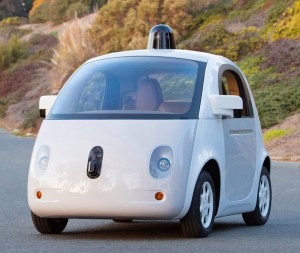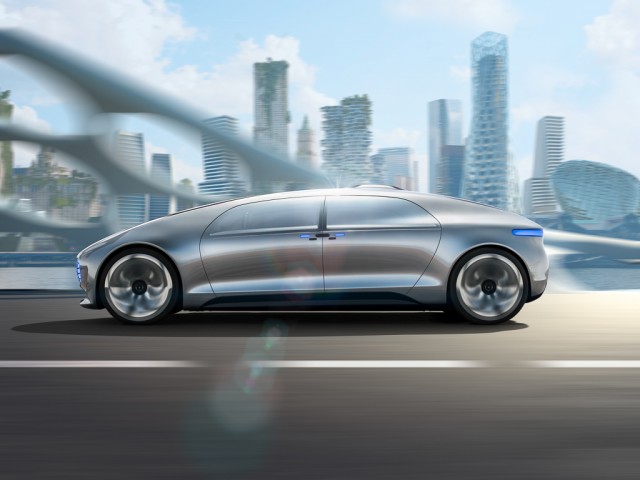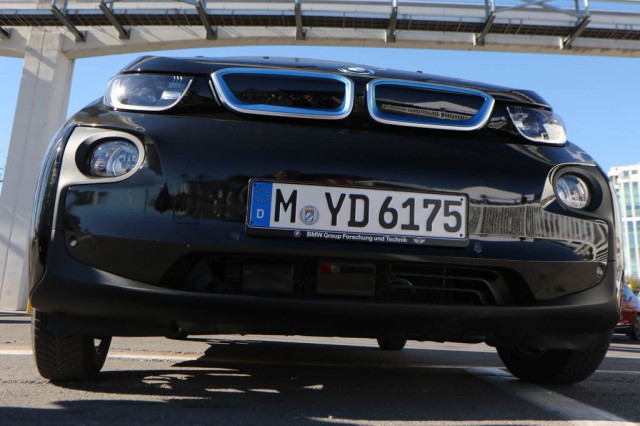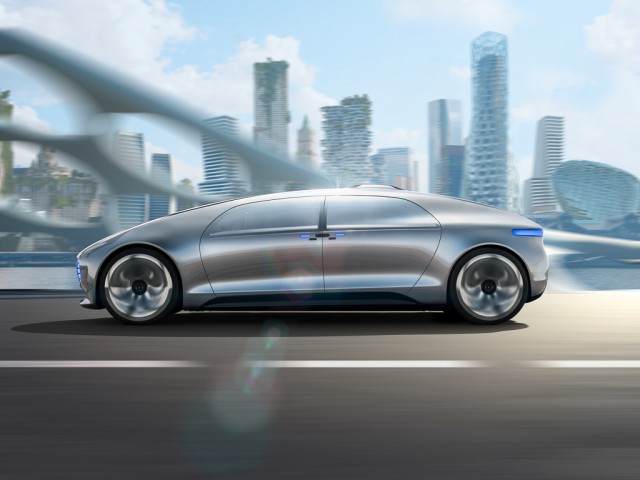
It’s 2015, self-driving cars are more than a promise
Self-driving cars drew 5-10 years closer to reality in the last week. That’s the impact of a half-dozen automakers announcing plans at CES 2015 for autonomous driving vehicles that will be on the road sometime between 2017 and 2020.
Excess Logic continues reposting interesting articles. We trying to pay your attention how important to recycle obsolete electronics and e-waste instead of disposing it into dumpsters.
To underscore how close we’ve come, Audi sent a car 560 miles from Silicon Valley to Las Vegas with lightly trained drivers — journalists, actually — sitting behind the wheel, hands-off.
Also at CES, Mercedes-Benz unveiled a swoopy prototype self-driver, the F 015 Luxury in Motion. The front seats swivel so driver and passenger can sit face to face with back seat passengers. BMW showed a self-parking i3 EV, not just parallel parking but able to hunt through a parking garage for open spaces. The same sensors avoid cars and pedestrians while under way. Ford CEO Mark Fields in a CES keynote said Ford will produce an autonomous driving car for the masses who can’t afford Audi/BMW/Mercedes level pricing.
Great, but when and how “self” is the self-driving?
Before 2000, estimates for autonomous, self-piloted, or self-driving cars — same thing — ranged from “never” to “maybe in our lifetime.” No car in the first DARPA self-driving contest in 2004 made it more than seven miles of the planned 150 miles in a deserted, desert course. By 2007 the majority of teams in a more complex urban course finished the race. More recently, self-driving Google cars have been zipping around Silicon Valley (still with a driver behind the steering wheel). As of CES 2015 this month, predictions for an on-sale self-driving car on the order of two to five years, or 2017 to 2020.
Read: How to recycle excess inventory in San Jose, Santa Clara, San Francisco Bay Area
The first cars will be self-driving on limited access roads such as interstate highways. They won’t be self-driving in urban areas though. They may be autonomous on rural roads with crossing traffic and pedestrians, farm vehicles, and crossing cars. At the least, they’ll help drivers with the monotony of long-distance trips.
Piloted driving Audi A7 looks almost normal
People within the industry — both on the tech and automotive sides — have a good idea of what everyone else is up to. Audi’s “piloted driving” A7 Sportback that started in Silicon Valley and drove itself to Vegas mostly unaided was a very public declaration of how close we are to autonomous driving.
The A7, nicknamed Jack, looks quite normal, with few of the DARPA-era big sensors stuck to the top and sides. Parked among other self-driving Audis outside the Las Vegas Convention Center with more outrageous antennae, it was the most unobtrusive.
For the drive, a group of journalists who’d agreed to training sessions, each got to drive or at least sit behind the wheel, in 100-mile stints. An Audi test driver was in the passenger seat; that was required by California law. The A7 was capable of driving itself outside of urban areas and at speeds up to 70 mph (110 kph). When the car’s map data indicated the approach of built-up areas, the driver was alerted to take over well in advance. Some research indicates a disengaged driver needs as much as 10 seconds to be ready to step in, so a self-driving car needs to deal with minor crises such as another car suddenly cutting into your lane.
Audi said the A7 concept vehicle uses “various production-ready sensors as well as sensors integrated into production vehicles today that accurately detect the vehicles surroundings. … The sensors [are] close to production and meet financial targets for inclusion into future products.” Translation: The sensors work, they’re ready now or soon, and by the time a self-driving car comes to market, they won’t be outrageously priced but they may still be expensive, even on a $75,000 vehicle.
The sensors include three that are today’s vehicles: adaptive cruise control, blind spot detection (side assist in Audi terminology), and lane departure warning/lane keep assist. In addition, there are laser / lidar scanners front and rear for better recognition of static and moving objects, and four smaller cameras for near-distance detection. A high-res, wide-angle 3D video camera also tracks surrounding traffic. It will be added soon to the Audi Q7 SUV due this year.
The multiplicity of short- and long-range radars and lasers provides redundancy beyond what you’d need for almost-hands-off driving today. Currently, if you keep your hands lightly on the wheel, the car will drive itself for miles at a time so long as the road has no more than a gentle curve, no driver suddenly cuts into your lane (ACC can’t or won’t handle it), and nobody in front panic-brakes.
Mercedes-Benz F 015: swoopy concept
The Mercedes-Benz F 015 Luxury in Motion will not see production. The roofline is low and sightlines are marginal for times when it is driven by human. But it is eye-catching. Since the F 015 is self-driving, front and rear seat passengers can face each other and the seats swivel to allow occupants to step out easily. It has gesture recognition using software developed in conjunction with Leap Motion. The passengers as well as the driver could theoretically control the car. The car may single-handedly resurrect the joke thread about back-seat drivers.
Colored LED lights on the outside announce to pedestrians the car’s intentions and might tell them when it’s safe to cross in front. The LEDs would be helpful for new owners in determining which end is the front, too.
Where others are finishing the technical details in making self-driving cars work, the F 015 shows the importance of rethinking what the driver and passenger do when you don’t need to keep eyes on the road.
BMW i3 parks itself
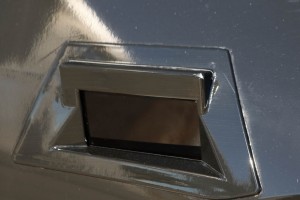 Like Audi, and unlike Mercedes, BMW used an existing car. The company focused on specific aspects of autonomous driving, namely self-parking that goes far beyond the parallel parking features available now where the car finds and steers you into a space while you control throttle and brakes. With the i3 urban commuter that was one of our 10 Best Tech Cars, you hop out at entrance to the parking garage and the little Bimmer rummages around until it finds a space and eases itself in, then returns to the entrance when you tap on a BMW smartphone app. It has to avoid other cars driving through the garage and bypass handicapped spaces. In a world of many self-parking cars, a garage could set aside spaces barely larger than the car itself.
Like Audi, and unlike Mercedes, BMW used an existing car. The company focused on specific aspects of autonomous driving, namely self-parking that goes far beyond the parallel parking features available now where the car finds and steers you into a space while you control throttle and brakes. With the i3 urban commuter that was one of our 10 Best Tech Cars, you hop out at entrance to the parking garage and the little Bimmer rummages around until it finds a space and eases itself in, then returns to the entrance when you tap on a BMW smartphone app. It has to avoid other cars driving through the garage and bypass handicapped spaces. In a world of many self-parking cars, a garage could set aside spaces barely larger than the car itself.
BMW demonstrated how the same laser scanners on four sides of the car – front, back, and on the sides (photo right) near the front wheels – handled obstacle detection and gentle braking, coming to a gentle stop about 8 inches (20 cm) away. The scanners and onboard algorithms know about the width of the car and if you cut a curb too close, or come too close cutting around another car or obstacle in town, the i3 warns you and then slows or stops the car to avoid crumpling its composite plastic bodywork.
BMW like other high-end automakers also has research going into full-blown self-driving cars but chose CES to showcase some of its specific urban mobility and highway driving solutions. Those same scanners measure the width of the road and the room between highway obstacles (a narrow bridge and a truck too close to your lane), then uses laser headlamps to paint a safe passing route or tell you there’s no enough room.
Author Bill Howard
Permanent article address

